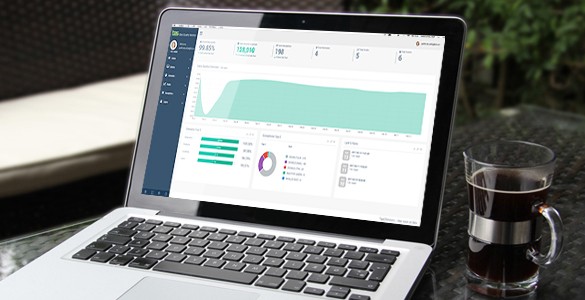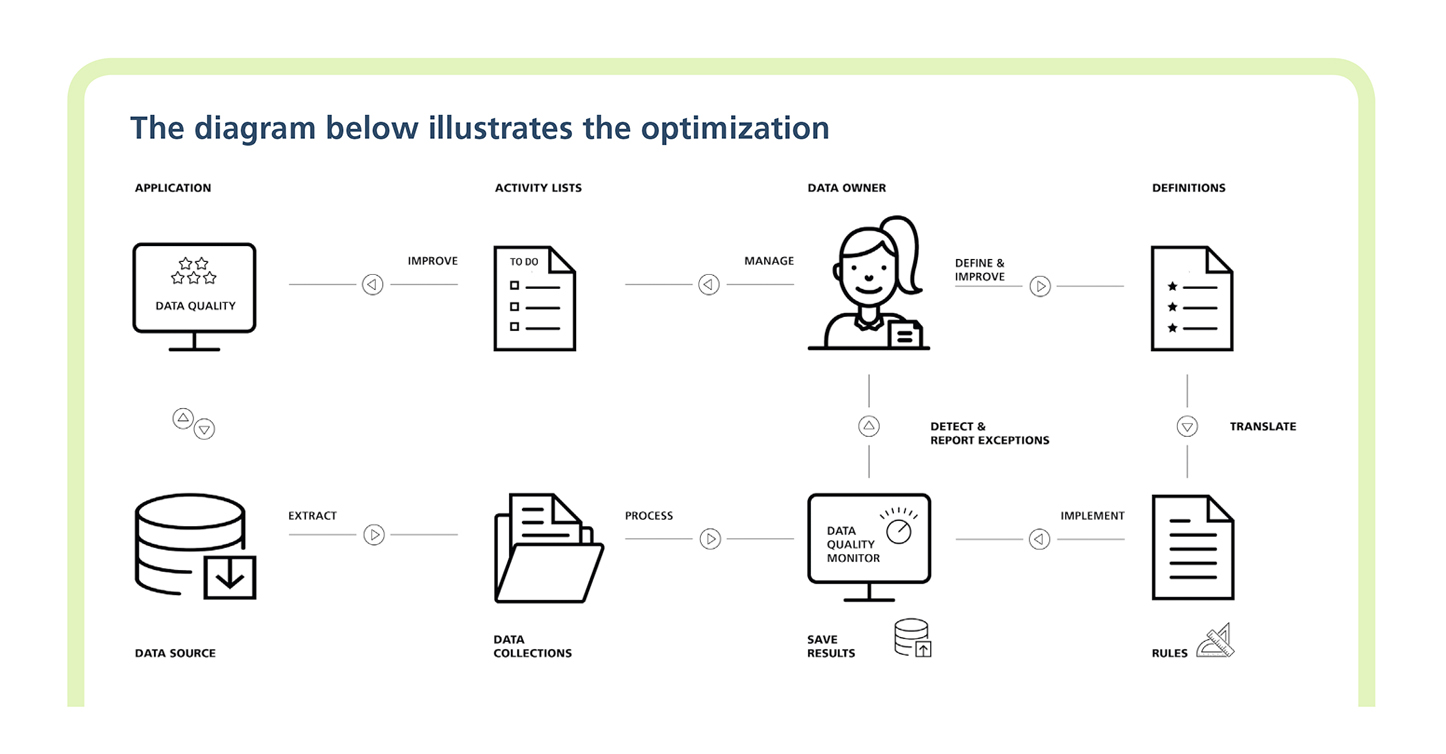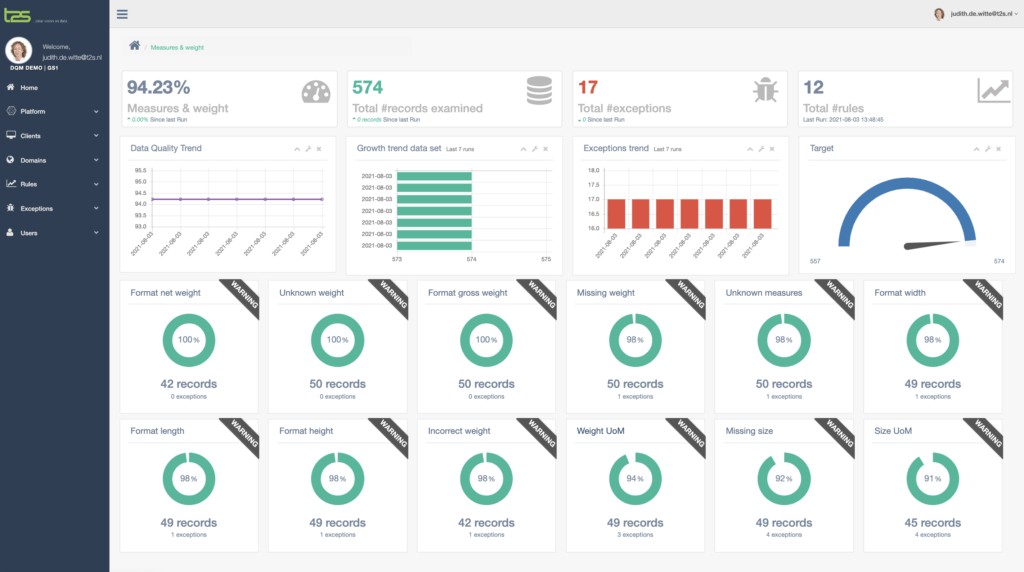Improve your results with data quality
You are responsible for the business processes in your department. You need to know what’s going on, but you have more data than you can handle.
Until the data is clean and available, critical facts and figures stay unknown. Turning this data into information takes special care and know-how.
How to start?
The road to insight starts with managing the quality of your data. Don’t let low-quality data stop you from getting ahead.
T2S data analysts help you each step of the way toward crystal clarity. This clarity, in turn, will show in your results.
Read the five tips for optimizing data quality, meet our data specialists and discover the data quality scan
- Complete, correct and current data is invaluable for a streamlined operation
- Optimizing and maintaining data quality requires a good plan and discipline
- Data quality gives you a strategic advantage and increases your results
- How to start? The Data Quality scan helps you on your way.
5 steps to optimal data quality
Data quality management is one of those concepts that is hard to define and hard to put into practice, let alone that it is clear how a company can best approach the optimization of data quality.
Jack de Hamer, data management specialist at Type 2 Solutions, defined the following five steps based on experience that offer practical help in improving data quality:
Step 1. Define the kind of data to be collected and the elements within that data which should be optimized.
Step 2. Define rules for each data element and automate the control mechanisms.
Step 3. Assign the responsibility for the optimization of a data entity to a single person.
Step 4. Automate data validation according to their definition, and keep the results.
Step 5. Correct exceptions and adjust their definition if necessary.
‘5 steps to optimal data quality’ presented by Jack de Hamer.
How does it work?
Data is extracted from the data source of an application (step 1). This data is automatically evaluated by the Data Quality Monitor (step 4), according to the business rules resulting from the data definitions (step 2). Exceptions to those business rules are detected, collected, and presented to the data owner (step 3), who can now take appropriate corrective action, either by correcting the data, or by fine-tuning the data definitions.
By repeatedly going through this process, a continuous improvement of the quality of the data, and of the optimization process leading to it, is achieved (step 5).
How to get started?
Data Quality Scan
To help you on your way with data quality, we offer a Data Quality Scan. During this scan we perform an audit of a current set of data. We load this data into the Data Quality Monitor.
Result
The result is data management advice, including an action plan for cleaning and managing the data. This advice will be presented to you on-site.
Data Quality Monitor
The T2S Data Quality Monitor helps you to tackle data quality issues. It provides that kind of insight that makes it possible to improve and maintain data quality.
Start using the Data Quality Dashboard today to see for yourself how it can help you.

Data quality management at Eichholtz
Dennis Hendriks, Director Operations at Eichholtz, shares how they started with data quality management:
“In 2019 we, as Eichholtz, started the collaboration with Type 2 Solutions. What we started with was quite simple, we’ve generated quite a lot of leads through conventions in the past 29 years. This means a large collection of data, data which is far from sanitized. It needed some doing to clean it up.”
Data cleansing
“That’s where Type 2 Solutions provided the answer, by, initially looking broadly at the data and identifying where the mistakes are, removing those mistakes, and enabling us to continue with a clean database. The next step was our switch to a new ERP, which resulted in a clean-up of about 30.000 records.”
Interview with Dennis Hendriks, Director Operations at Eichholtz.
Strategic advantage with data quality
Jack de Hamer, data specialist at Type 2 Solutions, wrote an article about ‘Data quality gives companies a strategic advantage‘.
It is not easy to put a price tag on ‘poor’ maintenance. According to Jack de Hamer, this is strongly influenced by its consequences.
“The costs can range from a few euros per customer when mail is returned to thousands or hundreds of thousands of euros in damage as a result of incorrect data on an invoice, customs document or label.”
Invest in a long-term solution
However, according to him, companies should not focus on a specific amount. “I think it’s better if companies want to safeguard their data quality in order to gain a strategic advantage in terms of customer retention or new buyers.” Optimizing and maintaining data quality requires a good plan and discipline.
Master data management projects
Click on one of the images and read what our customers have to say about working with T2S.
Optimize your article data
If you would like to exchange your article data with your customers your master data should be in order. Online retailers like Amazon, Bol.com, Ahold, Intergamma require that you exchange your data according to the GS1 standards. T2S Data Analyst Stefanie Polfliet wrote a blog about ‘GS1 code management – know how’ and the importance of data quality.
“For GS1 codes to be properly managed you need to view them as an important part of your master data. If that doesn’t help because your master data is a tad, well, messy, then I honestly recommend cleaning that up. It can be a bit like paperwork at home, you kept all the important stuff like you should, but it ended up on one big pile that still needs filing et cetera. Trust me, the sooner you clean up that pile the better, it’ll only keep getting messier after all.”
Read the full article on GS1 code management and the importance of data quality.


Let’s talk data business
Feel free to contact us to discover the possibilities for your company. Please leave your details and we will contact you as soon as possible.


Frequently asked questions about data quality management
Data quality is the extent to which data is suitable for its intended use and purpose. Depending on your business operations and the purpose, you set requirements for the data.
Complete, accurate, actionable, and current data are invaluable to your organization. Only then will you be able to act decisively and successfully. Nevertheless, there is a lot of uncertainty about managing data quality, let alone how best to approach optimizing data quality. A one-time fix for a specific customer or vendor, implementing a new IT system or setting up a data warehouse is not enough. Invest as an organization in a long-term solution.
Data quality management is an administrative task that incorporates policies, responsibilities, and processes with regard to the acquisition, maintenance, disposition, and distribution of data. Agreements have also been made in this process about the deletion of data.
The optimization and above all the preservation of data quality requires discipline and planning. Short data quality optimization stints are like bad diets: they do yield short-term results but end up in a yo-yo effect in the long term. View data management as a strategic advantage for your organization. Make data quality an integral part of your business operations and deploy data quality monitoring software. This means that the quality of huge amounts of data can be continuously monitored, and the data manager immediately receives a signal if there are exceptions. By using this process, the data quality and the data quality optimization process are continuously improved.
If you optimize once, you will be back at the same level as before or worse in no time! Data is constantly changing, and it is important to always check the quality and make corrections if necessary. In that sense, it’s like keeping up with woodwork outside. Regular inspections and periodic maintenance give the facade a more attractive appearance. In addition, you increase its lifespan. While at the same time preventing unpleasant consequences, such as wood rot and raining in, which can arise due to poor maintenance.
It is not easy to put a price tag on ‘poor’ maintenance. This is strongly influenced by its consequences. The costs can vary from a few euros per customer, when mail is returned, to thousands or hundreds of thousands of euros in damage as a result of incorrect data on an invoice, customs document, or label. Therefore, do not focus on a specific amount, but invest in a long-term solution. Continuously safeguard your data quality to gain a strategic advantage in retaining customers or bringing in new customers.










